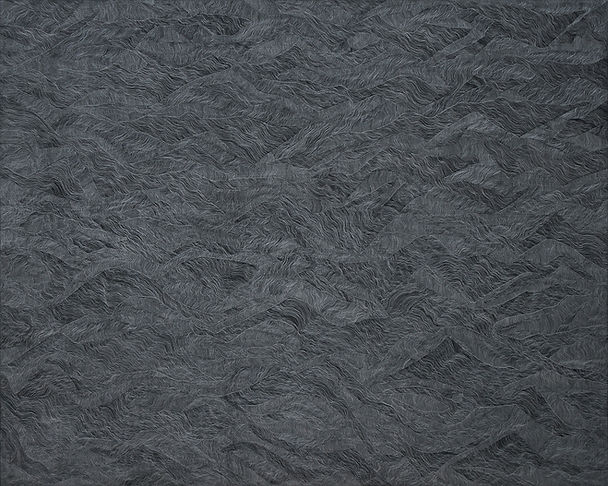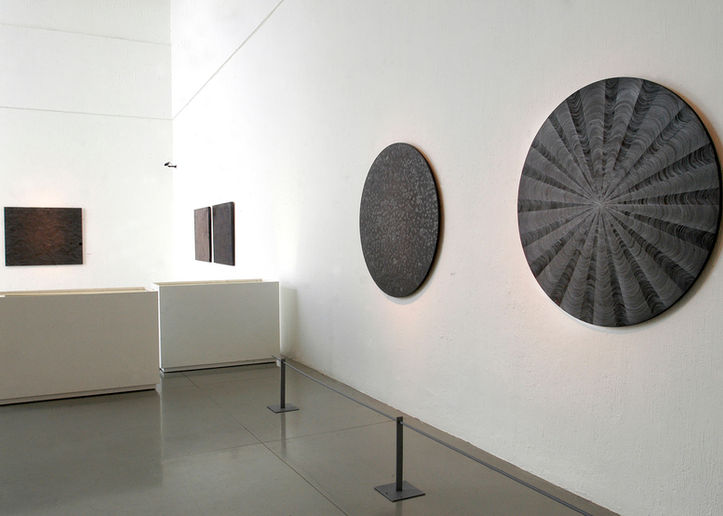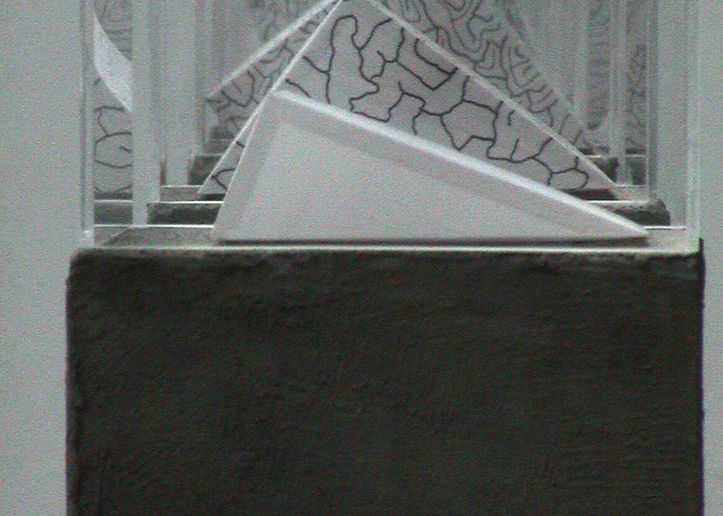
Mantos Eólicos, configuración de redes
Eolic Mantels, network configuration
Art
Contemporary
Location
Museo de Arte de Zapopan MAZ, Zapopan, Jalisco
Year
2008
Artist
Francisco Morales
The tones of the air gown
Many of the creation myths we currently know refer to the chaos-like principle of all things. Therefore, for the world to exist, there must be an order that gives meaning and form to all the reality we can experience. We arrange the words, the numbers, the colours of our clothes, the knowledge, the information, the time, the cities - everything has a position in our conception of things and ideas. Without the countless ways we devise to shape our surroundings and categorize the elements we use to understand and interact with nature, we would inevitably return to the primordial state that, for many, was—and remains—our fate: chaos.
But if chaos had a form we could conceive, would this be contrary to order? Today, science has shown that chaos is an option for imagining another conformation of the natural order, and not necessarily opposed to a rational thought that wants to label everything and give it a fixed position in our imagination.


This is often how the creative process works - not seeing opposites as a rule for knowledge and its transmission, but as a new guideline for approaching reality, or a form of collective infection to make us equal in utopia. Art has its own strategies for ordering, accommodating, and structuring its images, discourses, and meanings. In this contemporary world, besieged by advertising and cheap, accessible ways of reproducing images, the territory we value as art is legitimised by its capacity to mean and to give meaning not only to the image represented, but increasingly to the materials that artists use as extended forms of communication. In this sense, contemporary art has expanded its expressiveness and generated new targets of knowledge.

The formal and conceptual explorations in Francisco Morales' work follow this path. It is not merely a series of drawing exercises, but rather an attempt to interpret his surroundings through material, conceptual, and formal approaches. The images he invents can lead us to a kind of geometric primitivism or organic simplicity: the undulations of water, the surface of a stone, the rhythm of tree bark, the capricious geological forms, and so on. He is not interested in representing an image that we can recognise and compare, but in inventing another that approaches the constant flow of change in nature and the revelation of its heterogeneous rhythms. There is no room for camouflage. His graphite drawings emphasise the luminous contradictions of the material itself. Depending on our position in front of these works and the way they have been made, we can perceive undulating fields of brightness compared to others of similar shape but with different luminosity. The line sketch is always easily recognisable, ordered to create an image that we can discover with every movement we make in front of his drawings. Graphite allows him to draw a defined line and, at the same time, to create wide fields of lead tones that occasionally emphasise an effect of vibrant three-dimensionality, as seen in some of his works from the series Cóncavos y convexos and Mantos eólicos.


His simple and recurring forms in a single work attempt to vary their order time and again to create effects on the surface of the support. This is the case with some drawings on cement, one of the most quintessentially modern materials. It is the generator of great cities, allowing the construction of strong and resistant buildings at high altitudes—a triumph of progress. In his case, the artist uses it modestly, but not carelessly, as a container for the image drawn in graphite, which is transformed before our eyes into a network of soft lines and undulating rhythms, as in some pieces of the Obra Negra series, where the perimeter of the material of the support clearly presents itself as the precise limit of the image represented. A square formed by several dots of different tones, in which graphite can be exploited, is contained within a circle of cement. Its shape resembles a chessboard with a move that seems strategic and that we cannot guess. It is like a space of destiny, a board that suggests moves.

Francisco Morales does not try to be a modern artist from a perspective that values novelty, experimentation, or inclusion in an “ism” such as minimalism. Like many contemporary artists, he distances himself from classification. He Is absorbed in thought, valuing the way he works with his materials and his perspective on the world, nature, and its possible transformation into invented images. His work is about how he orders his forms and materials apart from the grammar of regional artistic languages in Mexico. His drawings, sometimes saturated with layers and lines made of graphite, cover surfaces with meticulous manual practice. This is how he introduces us to his way of interpreting nature without trying to imitate it. His methods allow us to understand the need to extend our knowledge of what we can transform and understand in order to construct our idea of what we call primordial, which may be false. It is probable that, in the beginning, everything was already there, and that our idea of progress is just a shining light that does not allow us to see other possibilities of order to understand ourselves.
Edgardo Ganado Kim


.jpg)
.png)
























